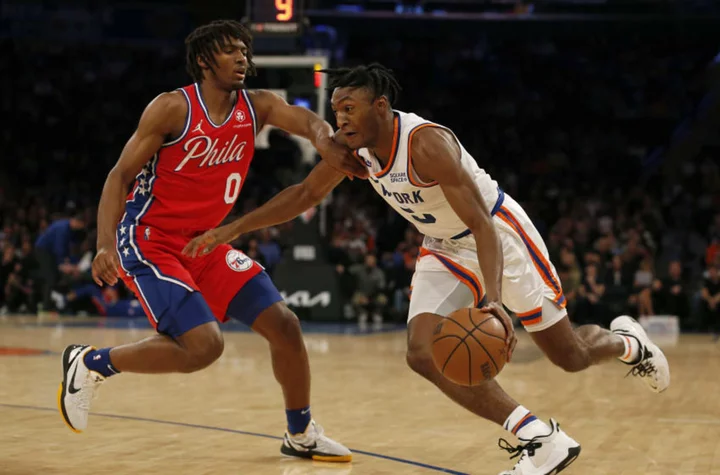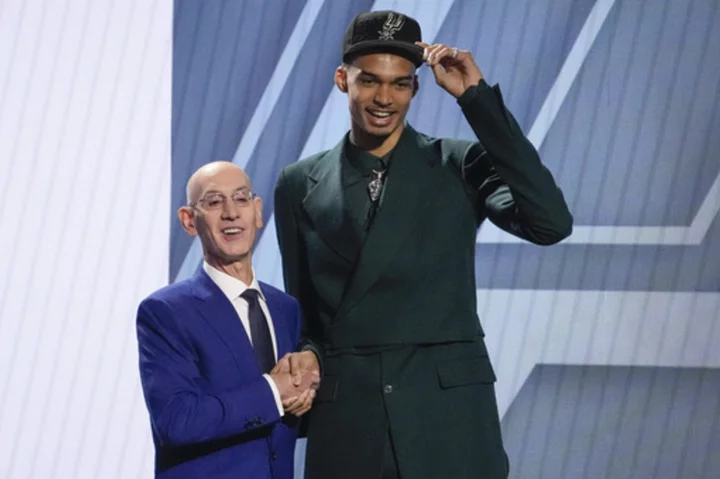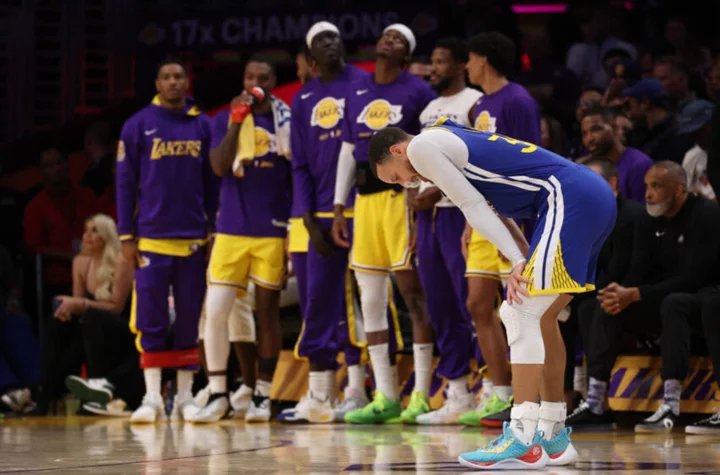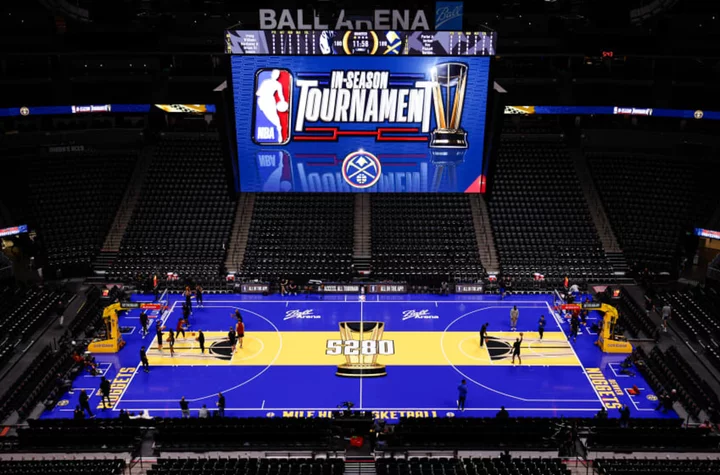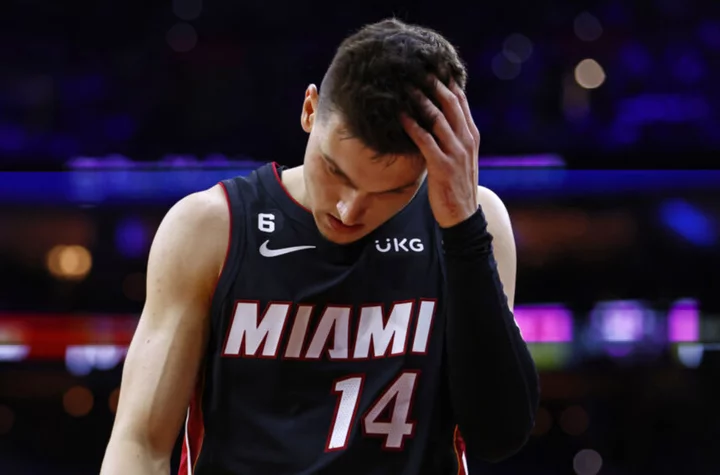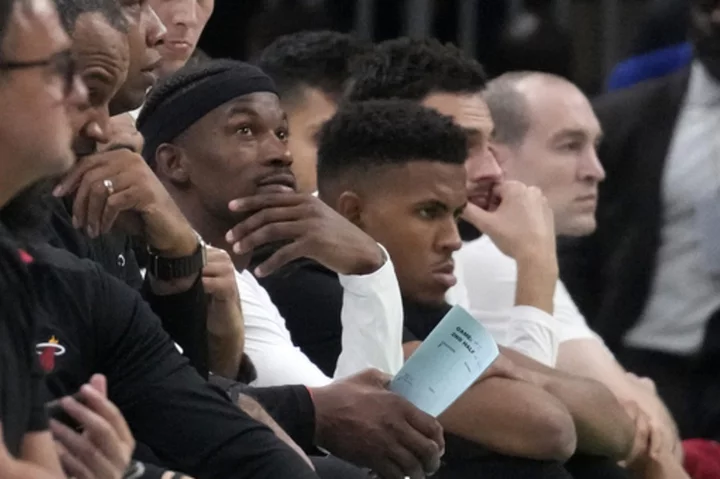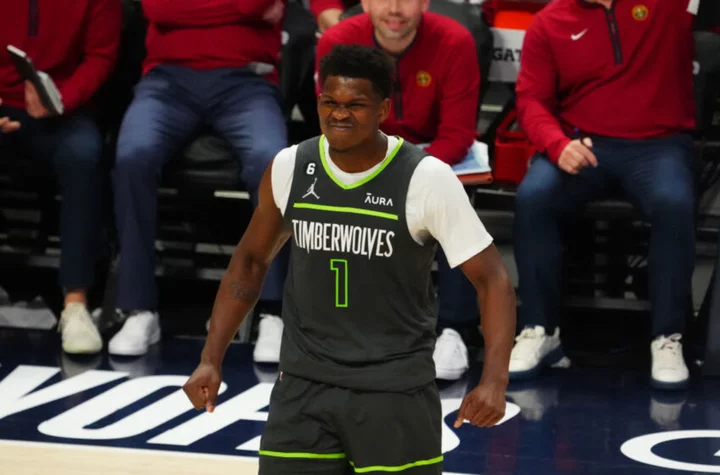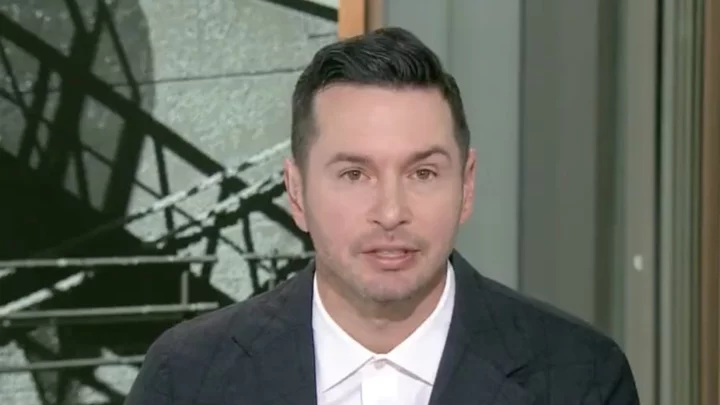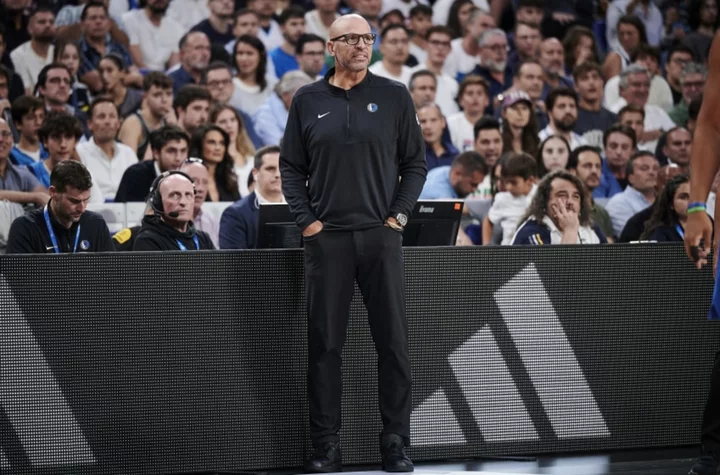The 2023 offseason has seen a record number of rookie scale extensions signed. Fourteen eligible players put pen to paper, blowing by the previous record of 11, set last offseason. In total, teams spent $1.625 billion on rookie-scale extensions, with the average contract coming in at 4.2 years, $116.1 million. While teams have a clear appetite to lock up their young players for the foreseeable future, not everyone from the 2020 draft class was so lucky.
Why rookie-scale extension don't come
A total of 13 players failed to agree to terms and will enter restricted free agency in the summer of 2024 should they receive a qualifying offer. The reasons why organizations and players fail to agree to an extension are varied. Sometimes, the player thinks they can get a better offer with multiple teams fighting for their services, and other times, the team isn't convinced they fit into their long-term plans.
Regardless of the reason why extension talks are shelved, the decision squarely puts the ball in the player's court. A big season can lead to a lucrative contract, while a poor year can cost them millions. Of the 13 players who failed to sign a rookie scale extension, these are the eight who have the best chance to turn disappointment into dollar signs.
8. Kira Lewis, New Orleans Pelicans
The battle for the eighth spot on this list was fierce, but not in a good way. Between Killian Hayes, Malachi Flynn, James Wiseman, Aleksej Pokusevski, Chuma Okeke, and Kira Lewis, there were almost no positive separators. The group has either played sparingly or played poorly when they have been on the court. The reason these guys weren't extended was simple. Their teams don't care if they continue to employ them.
In the land of the blind, the one-eyed man is king, and Kira Lewis is the one-eyed man lording over the eighth spot. He has only played 104 games over the past three seasons, but he produced a solid defensive season in 2022-23 and made an insane 44.1 percent of his 3s. While his 3-point shooting is solely a factor of luck in a small sample, his career free-throw shooting of 84.7 percent suggests he can probably convert 3s at a league-average clip.
If Lewis sticks in the NBA, he'll have to make it as a feisty on-ball defender to make up for his small stature (6-foot-1) and hit enough 3s that teams either pay for not guarding him or make some effort to. And he largely did that in his 235 minutes last season. While other guys played more, they were so much worse when they did that it hurt their ranking.
7. Precious Achiuwa, Toronto Raptors
Precious Achiuwa made the right decision forgoing an extension. His 2022-23 campaign was almost a breakout season, but his 3-point shooting regressed heavily from 35.9 percent in 2021-22 to 26.9 percent. Other than that, he saw his shooting efficiency reach career bests, as he converted 56.4 percent of his 2s and shot 70.2 percent from the free throw line.
Achiuwa is a combo power forward-center who needs to provide some level of 3-point shooting to have a considerable role or be the lone center in an aggressive switch-heavy scheme. If he had hit 33 percent of his 3s in 2022-23 instead of 26.9 percent, he would have further reinforced his ability to provide some level of spacing and could have earned a contract in the neighborhood of Isaiah Stewart's four-year, $64 million deal.
With the Raptors staring down a scenario where they could lose Pascal Siakam, OG Anuonoby, and Gary Trent Jr. in free agency next offseason, there was little incentive to extend Achiuwa right away. If he continues to struggle with his 3-point shot, he can be retained for half of what Stewart landed, and if he breaks out, they'll be staring at acres of cap space for Achiuwa to fill. As for Achiuwa, the contract he would have gotten this summer will almost certainly be there for him in 12 months. He's talented enough to bet on himself, and the downside is relatively minimal.
6. Isaac Okoro, Cleveland Cavaliers
Isaac Okoro is a superb example of why 3-point efficiency isn't always the best proxy for 3-point shooting talent. As an excellent defensive wing, coming off a season where he hit 36.3 percent of his 3s, Okoro sounds like one of the best young 3-and-D wings in the league. Unfortunately, his 3-point shooting volume and difficulty reveal massive offensive limitations.
Per NBA tracking stats, 2.1 of his 2.3 3-point attempts per game were classified as wide-open (a defender is at least six feet away). Converting 36 percent of your wide-open 3s sounds good, but the league converted them at a 38.7 percent clip last season, and when 91.3 percent of your 3-point attempts are wide-open, that means you're not actually spacing the floor. With the Cavaliers' roster construction built around two All-Star guards and two mobile All-Defense centers, they need their wings to attract some defensive attention.
Okoro's defense is legitimately a plus, but defensive specialists have become a dying breed in the NBA. For him to remain in the Cavaliers' long-term plans, he needs to make defenses guard him beyond the arc. The best way to do that is to fire from deep with more frequency because the Cavaliers' stars can handle creating efficient offense. They just need the space to do it.
A market for Okoro will always exist because of his defense, but the difference between signing a $40 million contract and an $80 million contract could be as small as taking three more 3s per game. Okoro has improved from distance each season, and a breakout beyond the arc could come back to bite the Cavaliers financially. He's a solid player who's close to becoming a genuinely good one. If his bet on himself pays off, he'll end his career with tens of millions of dollars more than if he took the safe money, and that might mean he ends up out of Cleveland.
5. Obi Toppin, Indiana Pacers
Placing Obi Toppin above Isaac Okoro is a bet on Toppin making the most of his opportunity now that he's in Indiana. For the first three seasons of his career, Toppin came off the bench in support of Julius Randle. While some Knicks fans bemoaned his usage, Randle made two All-NBA teams over that spell. Sometimes, lineup decisions are easy, and playing an All-NBA power forward over Toppin was one of those.
Toppin's lack of minutes in his first three years put the Knicks and him in a difficult position. On a different team, he would have played more, and negotiations over his next contract would have been relatively easy. Instead, he had to come off the bench and was incapable of building up a resume commensurate with his talent.
Following a trade to the Indiana Pacers, Toppin has a chance to prove he's an NBA-level starter and is in one of the best possible environments to flourish. Tyrese Haliburton is maybe the best young point guard in the league, and he should feast on a steady diet of transition opportunities where his impressive vertical athleticism plays up. He'll also be stationed next to Myles Turner, who can help on the defensive end, and more importantly, is a good enough floor spacer to allow Toppin to get a sizable share of pick-and-roll roll man possessions.
Over the past two seasons, Toppin has averaged 18.1 points and 7.2 rebounds on 63.2 percent shooting on 2s per 36 minutes. Even with below-average defense, that's an incredibly valuable player. The combination of Indiana's up-tempo offense and Haliburton's passing mastery should let Toppin come close to reaching those marks over a much larger minute load. Toppin isn't a perfect player, but he's in the right environment to make the most of his gifts, and there's every chance it leads to a much better payday than if he continued to be an overqualified backup to Julius Randle.
4. Patrick Williams, Chicago Bulls
According to ESPN's Zach Lowe, a known Patrick Williams fan, the Chicago Bulls' power forward was asking for "big, big numbers for his next contract… like, starts with a two and isn't $20M." Whether Williams was asking for $20 million per season or $200 million over the life of his deal, that would be a lot of money to throw at a player who has averaged between 9.0 and 10.2 points per game throughout his three-season career.
However, Williams has quietly become a very intriguing young player, and the best place to start is his age. Williams was the second-youngest player in the 2020 draft and only turned 22 two months ago. Age isn't everything, but it plays a massive role in draft models and future projections for a reason. The younger you are, the more runway you have to develop before you start declining.
While age played a big role in Williams going fourth in the 2020 draft, it also plays a big role in his ranking. He's been a solid starting caliber power forward at an age when the vast majority of basketball players are toiling away in college. Williams' skill set is incredibly difficult to find and is thus extremely valuable on the open market.
Power forwards who can guard the perimeter and provide weakside rim protection are the most valuable defensive chess pieces in the modern game. Williams hasn't fully actualized his potential on that end, but the flashes he has shown suggest he could become an All-Defensive team mainstay at his peak.
Then there is his shooting. Williams is a career 41.4-percent 3-point shooter and set a career-high in attempts per game last season at 3.4. The Bulls had the second-lowest 3-point attempt rate in the league last season at 33.3 percent which undoubtedly hurt his overall volume, but he's clearly a dangerous 3-point shooter and has hit an ungodly 45.2 percent of corner 3s in his career.
While Williams' passing and ability to create his own shot is poor, multi-positional defenders in the most important defensive role who can also hit 40 percent of their 3s are some of the most sought-after players in the world. Williams betting on his potential due to his age and positional scarcity is the right call. He might not be worth $200 million now, but there's a chance he makes the All-Defensive team while averaging 15 plus points per game on efficient shooting and lands that type of deal in restricted free agency. Even if he doesn't vault into that category of player this season, time is still on his side, and he's already a valuable player.
3. Saddiq Bey, Atlanta Hawks
Saddiq Bey is the type of young 3-and-D wing teams will do crazy things to obtain. For some reason, the Detroit Pistons were willing to pay James Wiseman and Marvin Bagley III $24.6 million this season instead of keeping Bey and extending him, but the Pistons' loss is the Atlanta Hawks' gain.
In 26 games for the Hawks, Bey was absolutely lethal shooting the ball, converting 40 percent of his 3s and 55.2 percent of his 2. While it's unlikely he'll continue to shoot so far above his previously established levels, it wasn't like he was a bad shooter before, and playing next to Trae Young does have some perks.
Bey's potential isn't as high as Patrick Williams', but he has shown more in his career to trust that he's a high-level starting player. The Hawks and Bey not agreeing to a deal is likely a function of a looming salary crunch that needs to be sorted before they can commit to a long-term deal.
However, if Bey hits restricted free agency, he'll have plenty of suitors. This is a good 3-and-D wing at the beginning of his prime. Every team with cap space will be interested in his services. With a full offseason to implement Quin Snyder's schemes and Trae Young pulling the strings, Bey is poised for a big season, and that should lead to a big payday.
2. Immanuel Quickley, New York Knicks
The New York Knicks and Immanuel Quickley failing to reach an agreement on an extension came as a surprise. The runner-up in Sixth Man of the Year voting in 2022-23 has improved every season of his career, and many of the Knicks' best lineups featured him last season.
In fact, Quickley's on-off net-ratings have the look of a superstar's. Throughout his career, the Knicks have been plus-7.1 points per 100 possessions with him on the court and plus-9.9 better compared to when he sits. While individual on-off ratings for role players don't tell the whole story, Quickley being integral to everything good the Knicks have done on the court suggests he impacts winning beyond his basic box-score statistics.
Speaking of box-score statistics, Quickley's aren't too bad either. Last season, he averaged 28.9 minutes, 14.9 points, 3.4 assists, and 4.2 rebounds per game on 37-percent 3-point shooting. On a per 36-minute basis, that extrapolates to 18.6 points, 4.3 assists, and 5.2 rebounds. He was one of five players from the 2020 draft to hit those per 36-minute benchmarks in 2022-23, along with Anthony Edwards, Desmond Bane, LaMelo Ball, and Cole Anthony, and he led that group in win shares at 6.7 and was second in Value Over Replacement Player at 2.1, tied with Anthony Edwards.
While Quickley clearly isn't on the same level as Bane, Ball, and Edwards and benefits from a smaller role, the fact remains he's an excellent two-way player. If he continues to play at this level and hits restricted free agency, he'll likely receive offers in excess of $100 million. Immanuel Quickley has been that good. Don't let eight bad playoff games cloud what has been an excellent start to a career.
1. Tyrese Maxey, Philadelphia 76ers
Tyrese Maxey shouldn't be on this list, but the Philadelphia 76ers' commitment to cap space in the summer of 2024 has him playing out the final year of his rookie deal. While Immanuel Quickley had the best advanced metrics of any player not to sign a rookie-scale extension, Maxey was right behind him and has two crucial advantages over him.
The first is his age. Quickley will turn 25 in June of 2024, while Maxey won't turn 23 until Nov. 4, 2023. Considering how close the two were in terms of advanced metrics, it's always better to bet on the younger guy. The next is the shape of his production. Maxey can reliably generate offense at a near All-Star level. Points per game might be overvalued, but Maxey has been able to shoulder a much heavier offensive load at better efficiency than Quickley.
Last season, Maxey was one of 18 qualified players to average over 20 (20.3) points per game with an effective field goal percentage of 56 percent (56.8 percent)or greater. That list of 18 is an All-Star game vote starter kit: featuring Luka Doncic, Giannis Antetokounmpo, Nikola Jokic, Kyrie Irving, Kevin Durant, Tyrese Haliburton, and Jimmy Butler, to name a few. The only non-elite player in that group was Bojan Bogdanovic, who quietly averaged 21.6 points per game on a 57 percent effective field goal percentage in the frozen wilderness of Detroit basketball.
With James Harden's role in Philadelphia being as mysterious as what lies beneath that behemoth of a beard, Maxey is in line to be the Sixers' lead guard. The result should be more points and assists with a slight uptick in turnovers and some efficiency decay. With how effective Maxey has been as a third option, there should be tremendous confidence in his ability to slide right behind 2022-23 NBA MVP Joel Embiid in the pecking order.
Maxey is not a great defender, but that's basically his only serious wart at this time. He's a legitimate scoring threat, and even if his passing isn't elite, it isn't a problem. The Sixers better hope their plan of hoarding cap space for 2024 works because they gave Maxey the perfect audition to land a monster contract.

